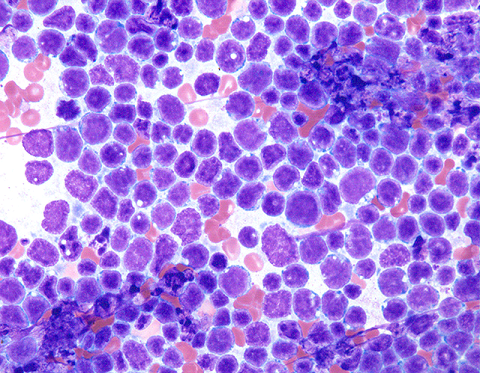Acute Lymphoblastic Leukemia Symptoms, Causes, Diagnosis and Treatment

What is Acute Lymphoblastic Leukemia?
Lymphoblasts are a kind of White blood cells that are commonly found in our bone marrow. Acute lymphoblastic leukemia is a cancer of lymphoblasts. This fast-growing cancer arises when your body makes abnormal amounts of immature lymphoblasts. This form of leukemia is more common in children.
Furthermore, the cancer cells tend to mature speedily and put back the normal cells in your bone marrow. Basically, bone marrow helps in the formation of all blood cells. Acute lymphoblastic leukemia averts the production of healthy blood cells. As the standard blood count drops, serious symptoms may crop up!
What Are The Symptoms Of Acute Lymphoblastic Leukemia?
Acute lymphoblastic leukemia makes the patient prone to develop infections and bleed. Few of its common symptoms are:
- Fatigue.
- Joint and bone pain.
- Fever.
- Easy bleeding and bruising (for example nosebleeds, bleeding gums and abnormal periods).
- Paleness.
- Loss of appetite.
- Feeling of fullness or pain below your ribs.
- Weight loss.
- Petechiae.
- Night sweats.
- Swollen glands in the groin, underarms and neck.
What Causes Acute Lymphoblastic Leukemia?
In majority instances of acute lymphoblastic leukemia, the clear trigger remains a mystery. However the following factors may instigate the disease:
- Toxins for instance benzene.
- Bone marrow transplant.
- Treatment by chemotherapy drugs in the past.
- Exposure to radiation.
- Some chromosome problems.
What Are The Risk Factors Of Acute Lymphoblastic Leukemia?
Following factors are identified for raising the risk of acute lymphoblastic leukemia:
- A sibling with leukemia.
- Down syndrome.
- Any genetic disorder.
Even though, this form of leukemia is more common in children, especially in children between the ages of three to eight, yet, it can also affect adults.
What Are The Potential Complications Of Acute Lymphoblastic Leukemia?
Both, acute lymphoblastic leukemia and its treatment put you at an increased risk of facing certain complications including infections, weight loss and bleeding.
How is Acute Lymphoblastic Leukemia Diagnosed?
During the visit, the doctor will carry out a thorough physical exam of the patient, which may help reveal:
- Swollen liver, spleen and lymph nodes.
- Bruising.
- Bleeding signs (purpura, petechiae).
The Doctor Will Then Suggest Blood Tests That Can Include:
- Platelet count.
- Complete Blood Count, including WBC count.
- Bone marrow biopsy and aspiration.
- Lumbar puncture.
How Is acute Lymphoblastic Leukemia Treated?
The treatment of acute lymphoblastic leukemia aims to normalize your blood count. Few of its treatment options include:
- Chemotherapy.
- Targeted drug therapy.
- Radiation therapy.
- Stem cell transplant.
What Is The Prognosis Of Acute Lymphoblastic Leukemia?
Patients who respond to the treatment at once have a tendency to do better. Many children with acute lymphoblastic leukemia have been effectively cured by now. As compared to adults, children tend to have a much better outcome.
Prevention:
You can minimize the chances of developing acute lymphoblastic leukemia simply by keeping away from certain chemicals, radiation and toxins.
By : Natural Health News




